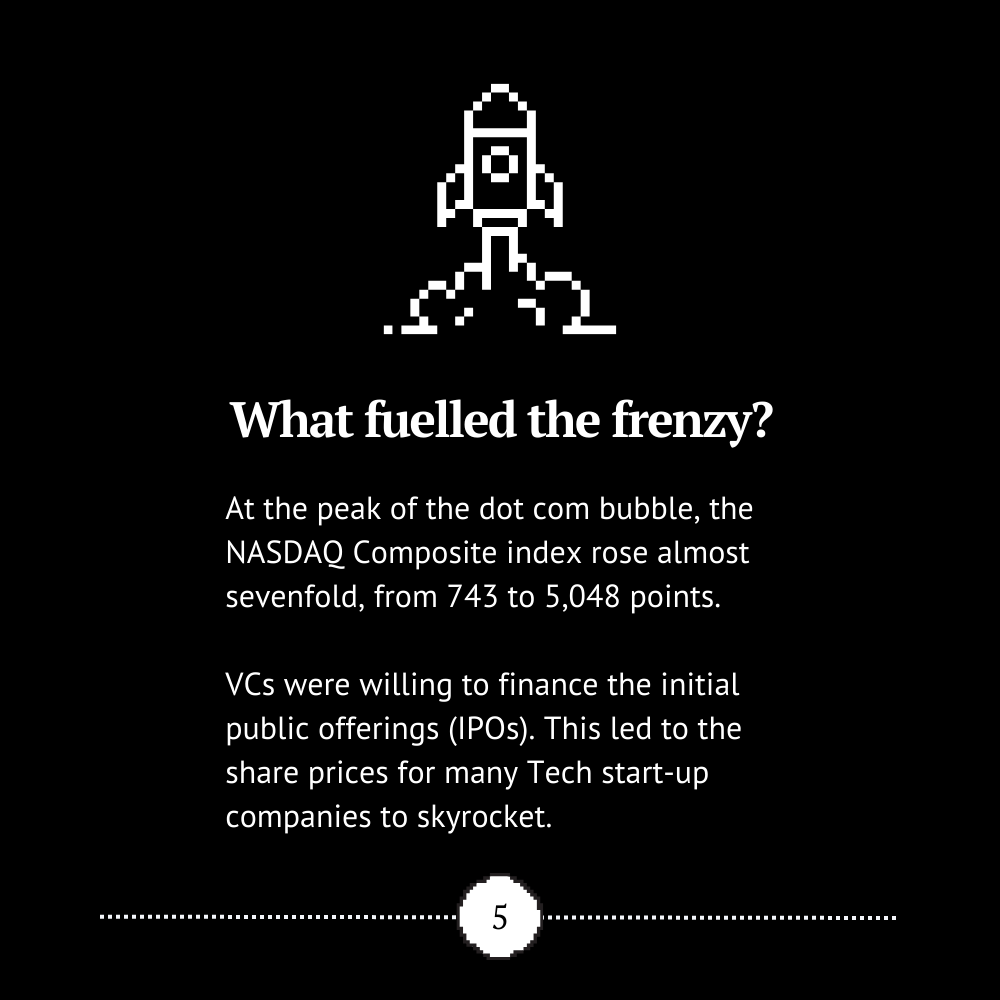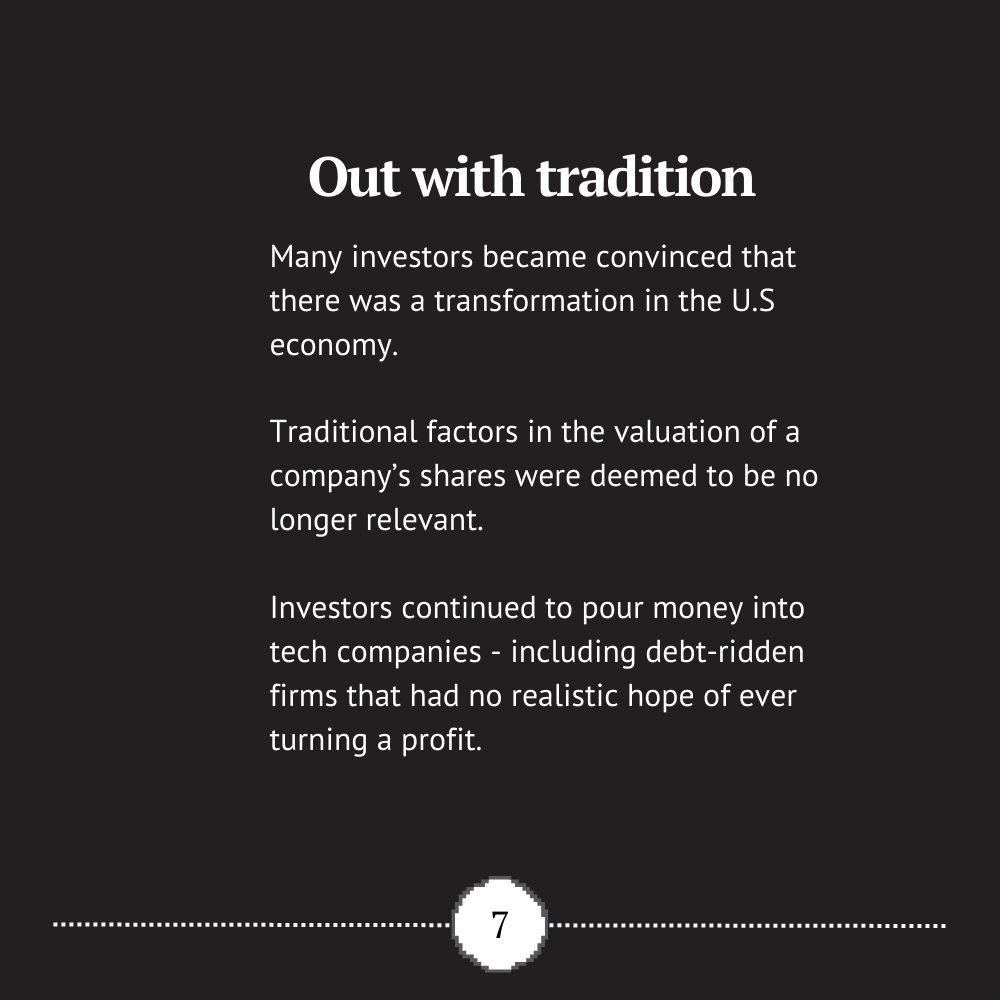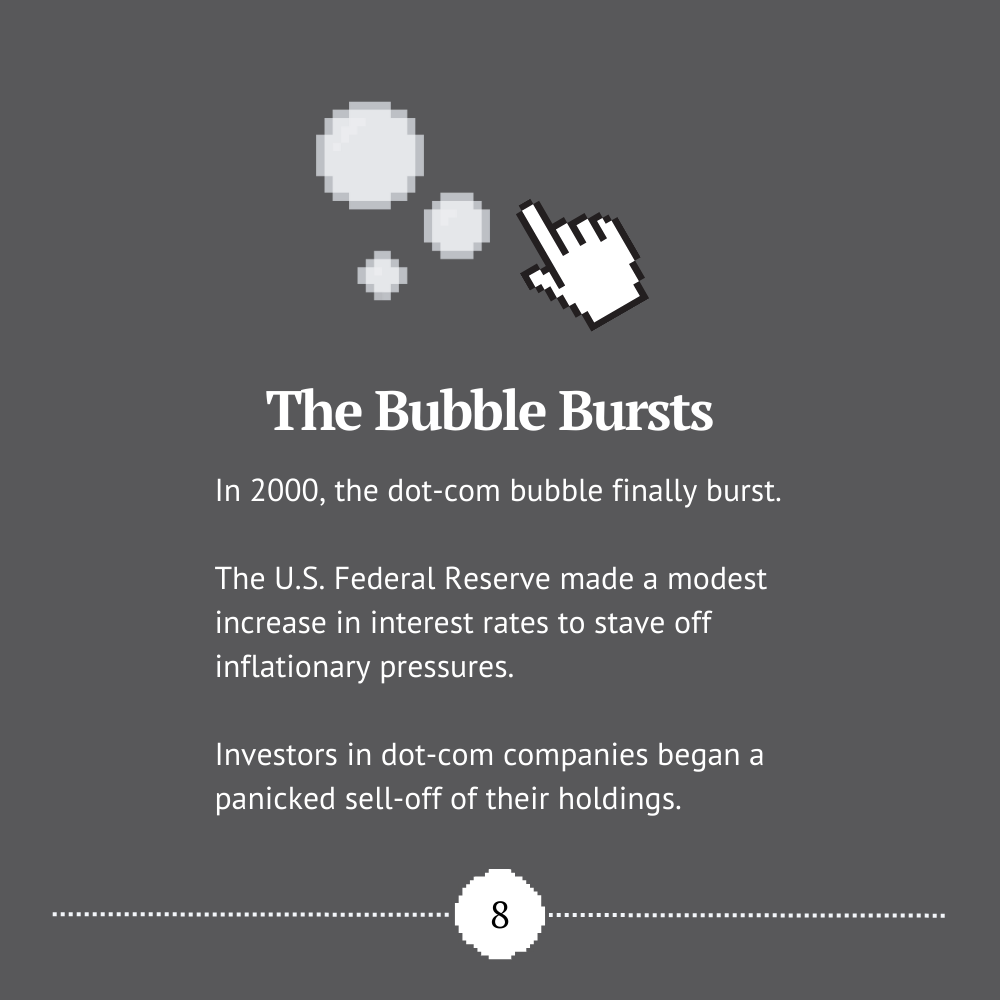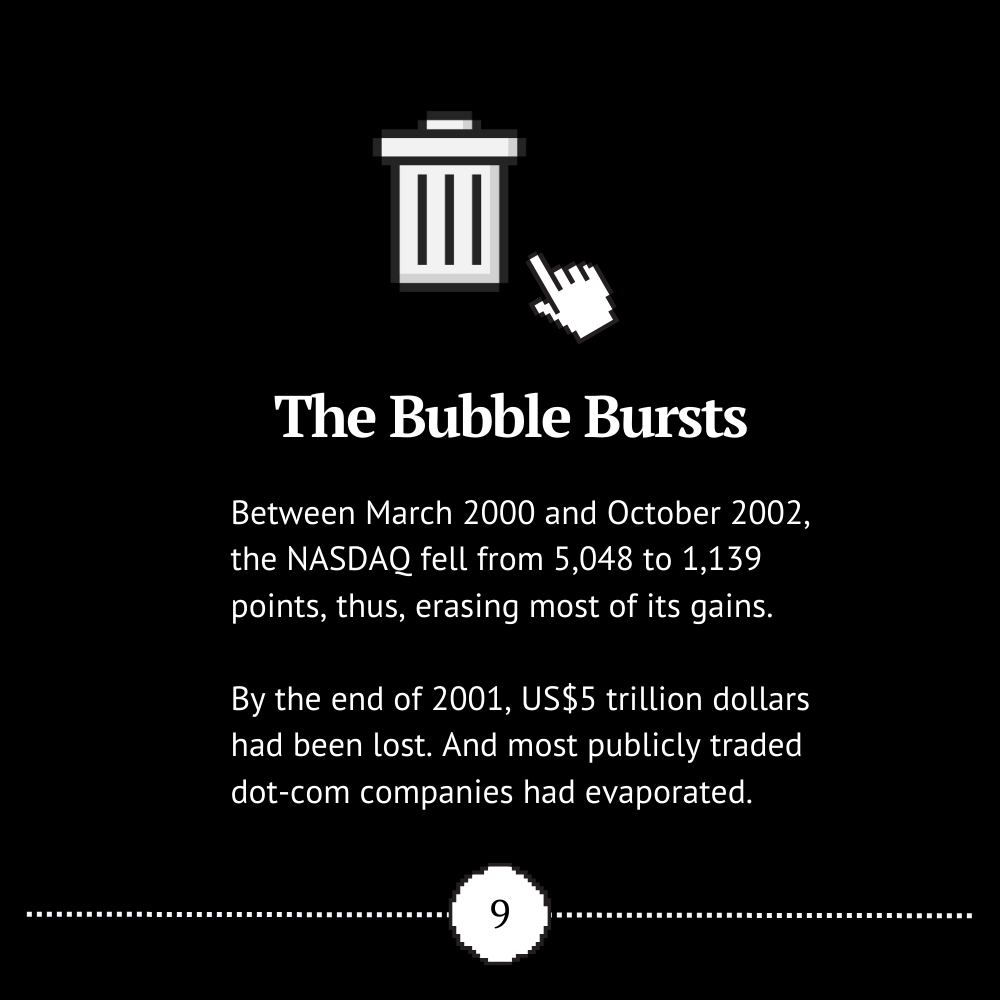Asset Bubble Series: Part 3 – Dot Com Bubble
The Rise of Dot Com
Part 3 of our asset bubble series takes us back to the future. By 1995, the internet was establishing itself as a powerful commerce tool. The rise of expectations and possibilities of what the internet could deliver grew immensely. The internet spawned a new category of businesses dubbed ‘Tech Start ups’. These new companies drew the attention of venture capitalists and investors. So a frenzy of investing began. And in turn this created what would become known as the ‘Dot-Com Bubble’.
What fuelled the frenzy?
The high and unsustainable valuations by investors continued to increase tech companies’ prices. Despite them having unrealistic business models. And little to no record of profitability.
At the peak of the dot com bubble, the NASDAQ Composite index rose almost sevenfold, from 743 to 5,048 points. This reflected the early enthusiasm of investors in dot-com enterprises. And the willingness of venture capitalists to finance the initial public offerings (IPOs). This led to the share prices of many Tech start-up companies to skyrocket. And in their genesis, a lot of start-ups would compensate their employees with stock options. So as these companies went public, many of their employees became millionaires.
Valuations of shares in new and existing dot-com companies continued to rise. Many investors became convinced that there was a transformation in the U.S economy. That is, the traditional factors in the valuation of a company’s shares were no longer relevant. So, investors continued to pour money into tech companies, including debt-ridden firms that had no realistic hope of ever turning a profit.
The Bubble Bursts
In 2000, the dot-com bubble finally burst. The U.S. Federal Reserve made a modest increase in interest rates to stave off inflationary pressures. This changed the investment fundamentals of the market, as the present value of future earnings was slashed. Investors in dot-com companies began a panicked sell-off of their holdings.
Between March 2000 and October 2002, the NASDAQ fell from 5,048 to 1,139 points, thus, erasing most of its gains during the dot-com era. By the end of 2001, most publicly traded dot-com companies and trillions of dollars in investment had evaporated.
Lessons for Today
The Dot-Com Bubble has left us with many lessons, most of which seem to be regularly forgotten and subsequently relearned. Just like the Dutch Tulip mania over 300 years ago, the Dot Com Bubble was fuelled by irrational exuberance, where investors chased unrealistic expectations of future profits without considering underlying economic or financial fundamentals.
It’s critical to understand that when commentators and experts refer to ‘markets’, they are referring to people. And for all our strengths, people are still subject to irrationality and cognitive biases. Pinpointing when these issues are at play in markets goes a long way in spotting potential for market bubbles.
Join us in the next instalment as we continue our exploration of history’s most infamous asset bubbles. Unravelling their complexities and uncovering the wisdom they hold for navigating today’s turbulent markets.
This article is part of our Asset Bubble Series. If you enjoyed reading this, you might like to also read:
Asset Bubble Series: Part 1 – Tulip Mania
Asset Bubble Series: Part 2 – Japanese Real Estate Crisis











